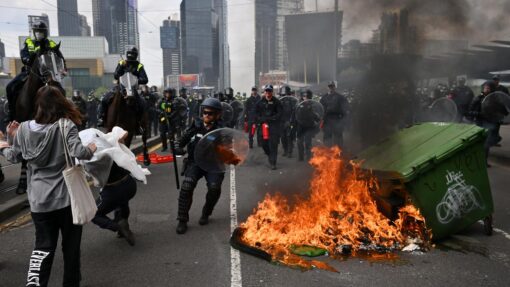Annual wages growth reaches 3.1 pct
Poppy Johnston |
Wages are increasing at the fastest pace in a decade but inflation continues to outstrip pay rises, meaning pay packets are not lifting in real terms.
The national statistics bureau’s wage price index lifted one per cent in the September quarter and 3.1 per cent annually in the September quarter.
“This is the highest quarterly growth in hourly wages recorded since March quarter 2012,” Australian Bureau of Statistics program manager of prices Michelle Marquardt said.
In the June quarter, they grew 0.7 per cent in three months and 2.6 per cent over the year.
Ms Marquardt said rising pay packets were largely driven by the private sector, where they were growing at twice the rate of those in the public sector.
Including bonuses, private sector pay lifted 1.6 per cent for the quarter and 4.1 per cent annually.
Competition for workers has been putting upwards pressure on wages in the private sector, she said, as well as the Fair Work Commission’s ruling to boost the minimum wage and awards.
But the rising cost of living continues to outstrip wages growth as headline inflation hit 7.3 per cent in the September quarter.
EY senior economist Paula Gadsby said the September quarter WPI result was a double-edged sword.
“Real wages continue to fall which will further weaken consumer confidence, already at recessionary lows due to the rising cost of living and rising mortgage rates,” Ms Gadsby said.
“On the upside, it will not add much to price pressure, further assisting the Reserve Bank in their efforts to cool the economy and tame inflation.”
The RBA has recently raised concerns about a wage-price spiral taking hold.
Ms Gadsby said fierce competition for labour – with the jobless rate close to 50-year lows – was only gradually feeding into wages growth.
Employment Minister Tony Burke said it was weak given the sustained low unemployment.
He said there were “leaks in the system” preventing the conversion of strong labour demand into higher pay.
“If you want to get wages moving, you have to start plugging those leaks in the pipes, you need to start closing those loopholes,” Mr Burke said at the National Press Club on Wednesday.
“The next step in getting wages moving again is fixing Australia’s broken bargaining system,” he said, referring to Labor’s proposed workplace reforms that include expanded multi-employer bargaining rights.
Australian Council of Trade Unions assistant secretary Liam O’Brien agreed the industrial relations system was failing workers.
“To get pay rises across the economy we need to make bargaining more accessible, in more workplaces,” he said.
But some business groups warned the proposed reforms would do the opposite.
“If stronger wages growth is to be realised, it is vital that these gains are delivered by the enterprise bargaining system, which is reliant on increasing productivity,” Australian Chamber of Commerce and Industry chief executive Andrew McKellar said.
“The proposed one-size-fits-all multi-employer bargaining changes will only reduce competition and hold back wages growth.”
Shadow treasurer Angus Taylor said it showed businesses were prepared to offer higher pay to attract and retain staff.
“Today’s WPI figures show encouraging signs that businesses are responding to a strong labour market with wages in the private sector growing at twice the rate of wages in the public sector in the September quarter.”
The ABS will release its October employment data on Thursday.
AAP


